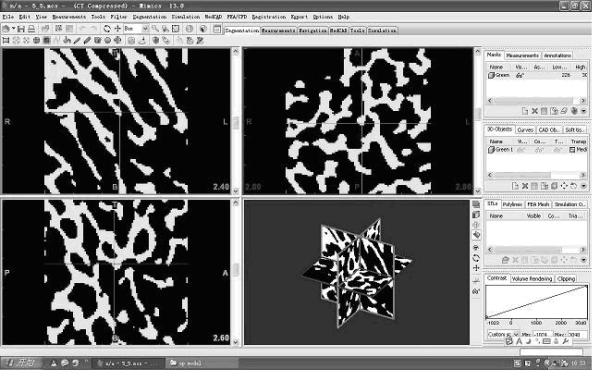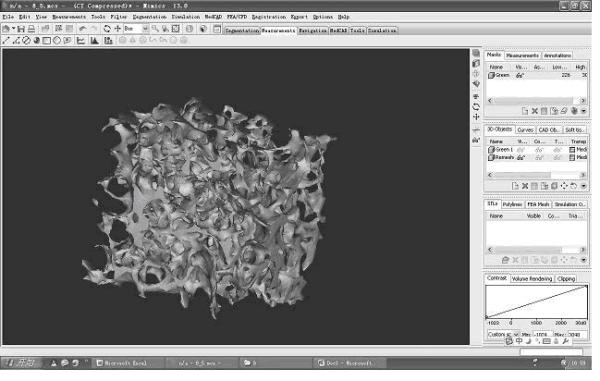Pore network model (PNM)-based bionic bone scaffold designing method
A pore network model and bionic bone technology, which is applied in computing, 3D modeling, bone implants, etc., can solve problems such as difficulty in ensuring structural functionality, poor control of porosity and connectivity, and large differences
- Summary
- Abstract
- Description
- Claims
- Application Information
AI Technical Summary
Problems solved by technology
Method used
Image
Examples
Embodiment Construction
[0074] A preferred embodiment of the present invention, detailed description is as follows in conjunction with accompanying drawing: See figure 1 , the bionic bone scaffold construction method based on the pore network model, the operation steps are as follows:
[0075] 1. Process the Micro-CT data into a binary image by using the threshold method, and further process and reconstruct the cancellous bone model, and obtain the porosity, penetration rate and pore diameter distribution through measurement;
[0076]Micro-CT scanning was performed on natural bone to obtain tomographic images of microscopic three-dimensional porous structure information and three-dimensional spatial position density information of natural bone. The tomographic images obtained by the above-mentioned Micro-CT scans were binarized using the threshold method to obtain images with only two gray levels (see figure 2 ); in the gray-scale image above, select the image area of cancellous bone and set the ...
PUM
 Login to View More
Login to View More Abstract
Description
Claims
Application Information
 Login to View More
Login to View More - R&D
- Intellectual Property
- Life Sciences
- Materials
- Tech Scout
- Unparalleled Data Quality
- Higher Quality Content
- 60% Fewer Hallucinations
Browse by: Latest US Patents, China's latest patents, Technical Efficacy Thesaurus, Application Domain, Technology Topic, Popular Technical Reports.
© 2025 PatSnap. All rights reserved.Legal|Privacy policy|Modern Slavery Act Transparency Statement|Sitemap|About US| Contact US: help@patsnap.com



